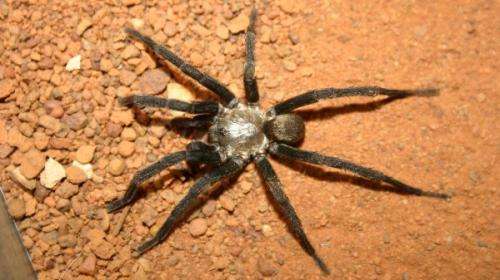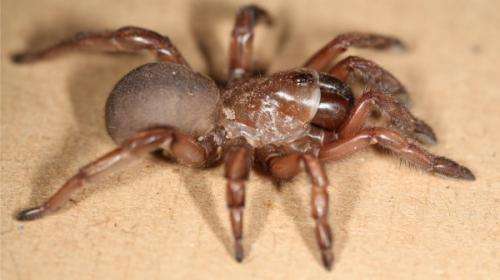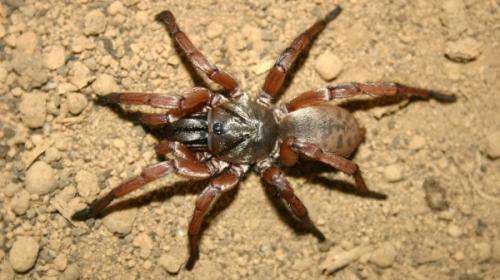A male Idiommata spider. Credit: WA Museum
A molecular biologist says the Pilbara has 161 per cent more Mygalomorph spider species than previously thought, according to a new genetic analysis.
WA Museum zoology expert Dr Mark Castalanelli says "with short-range endemics like Mygalomorph spiders there's lots of diversity out there, of which very little has ever been described."
The infra-order includes several families, represented in Australia by funnel web and trapdoor spiders.
Dr Castalanelli says each species has typically been classified by the adult male's unique sex organ, and the adult male's life span is usually brief.
A sexually-mature male will typically spend several weeks travelling above ground, hunting for females.
This makes him vulnerable to predators such as birds or ghost bats.
If he finds a female, she kills and eats him if he is unable to escape after mating.
Females of some species, on the other hand, may live safely below ground for several years even decades.
"Also, they only mature into a male at certain times of year, so you only ever have a very narrow window of ever finding a male," Dr Castalanelli says.
Therefore, about 95 percent of all specimens sent into the WA Museum are juveniles or females, which have limited morphological features that can be used for species-specific classification.
A female Aganippe. Credit: WA Museum
Dr Castalanelli made a new analysis of each Mygalomorph specimen in the museum's collection, as well as new material the consulting firm Biota collected from Rio Tinto and BHP tenements in the Pilbara.
"A leg was taken off each of the samples, which is used for DNA analysis," he says.
"The rest of the spider is used for morphological identification.
"So once we have the leg we can take a tiny bit of tissue off and we do DNA extraction using chemicals and enzymes to break down the tissue and get DNA out.
"Then from there we targeted a gene which is referred to as the 'barcoding gene'."
A female Aname. Credit: WA Museum
They analysed this mitochondrial gene, which is called the cytochrome c oxidase subunit I (COI).
"This gene has been termed the 'barcoding gene' because it evolves fast enough that it pretty much can differentiate all species on the planet, like a barcode," Dr Castalanelli says.
He says based on this data, they conducted a phylogenetic tree using Bayesian predictive methods to model Mygalomorph diversity and the distribution of species in the Pilbara.
The analysis is available to help authorities assess proposed large-scale developments that require environmental approvals, such as new mines.
Provided by Science Network WA


























